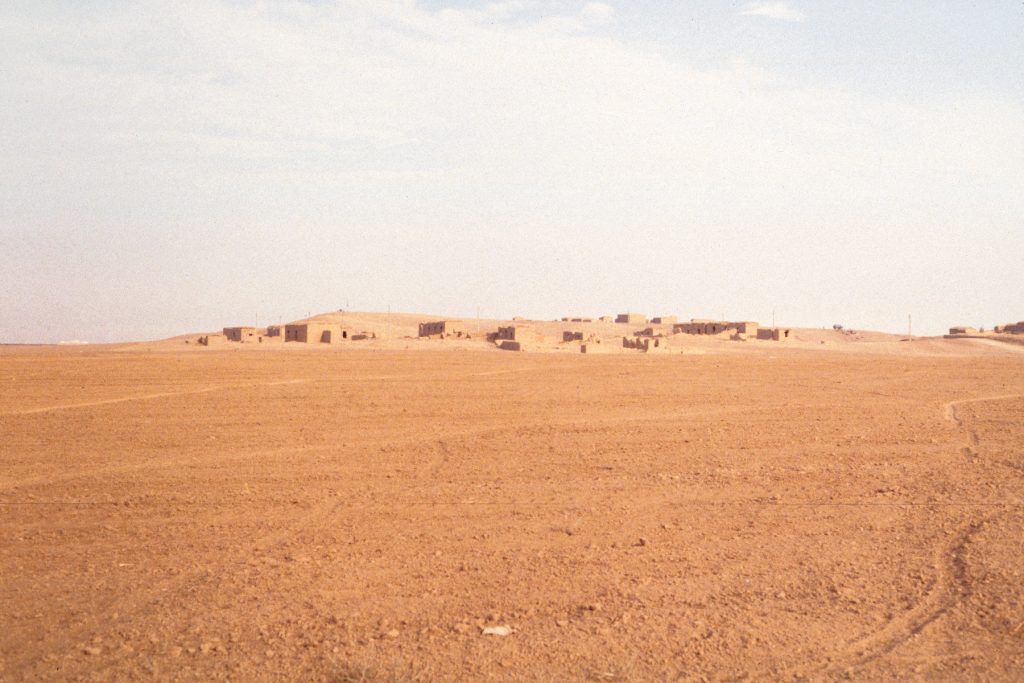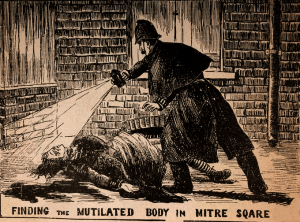Scholars have spent decades researching the origins of civilization. Most scholars have traced its roots to the land of Mesopotamia, which is often called “the Cradle of Civilization.” Initially, scholars believed that the oldest cluster of city-states making up the first civilization was in Southern Mesopotamia, known as Sumer; however, a new city-state found in the ruins of Northern Mesopotamia may have existed even earlier than that of Sumer. This once thriving and prosperous city may have come to an early end; it may have been the first city to have been destroyed by war. This city was Tell Hamoukar.1
Tell Hamoukar was a city located in what is known today as Syria. The city is currently believed to have existed as far back as 5000 years ago, during the Ubaid period (6500-3800 BCE). This is the same period during which Ur and Uruk of Sumer were also developing into complex societies. However, fossils and treasures found within Hamoukar do bear resemblance to those found in the other two, which suggests that Hamoukar could have pre-dated those other cities by several centuries.1

Most Mesopotamian cities were formed near rivers and bodies of water because of their irrigation potential for agriculture. Unlike these other cities, Hamoukar developed away from major waterways, but it possessed fertile soil. Crates and other tools not normally found within the region, such as obsidian, laid scattered around Hamoukar. This suggests that Hamoukar was a trading port, and one of the first of its kind.3
Scholars are gradually coming to see Tell Hamoukar as having been possibly one of the earliest complex societies. Many of the pots, doors, and items found around Hamoukar bare symbols to denote ownership. This was done at a time before written language had been invented.4 Each seal possessed different pictures, such as lions or kissing bears, and were stylistically different from seals found in other regions. Infant burial grounds and eye idols, as well as ovens and other tools for food preparation, were also recovered.5.
Tell Hamoukar’s prosperity was not meant to last, however, as it soon found itself under the threat of invasion. Littered around the ruins of the once mighty city lie over 1,200 clay bullets and 120 clay balls. Scholars hypothesize that these oval shaped bullets may have been launched from slings and hurtled towards some foe with deadly accuracy. Many of these bullets were flat, which suggests that the clay had not fully hardened before being slung. It is possible that there had been an attack on Hamoukar, and that it proved to be a greater battle than the invaders had originally anticipated. The defenders may have used all of their ammunition and were forced to create new rounds during the battle.6
Nonetheless, scholars believe that the siege of Tell Hamoukar was probably a success. Citizens fled as the once proud city soon burned to the ground.7 While the invaders have not been identified, many of the weapons match Uruk designs, and it is believed that they are the ones who overtook the city, though their exact reason remains a mystery. The dating of the weapons suggests that this was one of the earliest recorded battles in history.8
- Lewis Lord, Richard J. Newman, and Marianne Lavelle, “Chaos over the Capital,” U.S. News & World Report, June 5, 2000, 18. ↵
- Lewis Lord, Richard J. Newman, and Marianne Lavelle, “Chaos over the Capital,” U.S. News & World Report, June 5, 2000, 18. ↵
- Andrew Lawler, “North versus South, Mesopotamian Style,” Science, 312, no. 5779 (June 2006): 1461. ↵
- Andrew Lawler, “North versus South, Mesopotamian Style,” Science, 312, no. 5779 (June 2006): 1461. ↵
- McGuire Gibson and Mohammad Maktash, Antiquity 74 Issue 285 (Sept, 2000): 477 ↵
- Zach Zorich, “Relics of the Very First War,” Discover 27, no. 3 (March 2006): 12. ↵
- Andrew Lawler, “North versus South, Mesopotamian Style,” Science, 312, no. 5779 (June 2006): 1461. ↵
- Zach Zorich, “Relics of the Very First War,” Discover 27, no. 3 (March 2006): 12. ↵



36 comments
Jadyn Evans
It is so interesting how we think we know something and be completely wrong and learn more. There is so many questions for this discovery and so many people wanting g to know them. Learning more about Hamoukar could be more eye opening then ever imagined and maybe even apart of something much bigger than we realize.
Juan Arceo
Thanks to this class and prior knowledge, I knew (or better yet thought) that the first civilization was based in Mesopotamia. After reading this article however, the story of Hamoukar is very interesting. The fact that there is the possibility of this being the original civilization is fascinating due in part that they were pretty advanced for there day in age. It was unfortunate that their reign was cut short, but it still is interesting how this quite possibly could have been the original civilization.
Diego Terrazas
I have never heard of this city and I am baffled at how old it is. The city seem pretty well developed and ahead of its time. I wonder how the society in this city was like and if they were egalitarian or maybe had a leader. It may be impossible to answer many questions but the mystery around such a city makes it more compelling, especially scholars.
Dalton Moy
It is very interesting to think about how people so long ago acted. We are familiar with military tactics of today, and it is very cool to compare what the modern military handles actions to how our ancient ancestries fought. Hopefully more research can answer more questions that arise about the civilizations between which the battle was started. Studying ancient civilizations definitely help us to know what we come from and possibly answer questions as to why we act in certain cultural ways that we have been brought up with.
Jabnel Ibarra
Reading about early human civilizations has always been fascinating to me. The stories these ancient cities hold for us tells us about the origins of essential aspects of human life, such as trade, commerce, war, and even property and labels. One question I have after reading this article, however, is if Hamoukar was potentially the oldest civilization, who invaded them?
Alexander Manibusan
To hear that there was once a place that predates the Sumerian cities is something that sparks my mind. But this just makes more questions. Who were these people? How did they establish Hamoukar? Who ruled it? And then of course there is the question of who invaded who. I think this is why I enjoy ancient history. There’s so much mystery and so many questions. And sometimes those questions have yet to have answers.
Pamela Callahan
I found this article to be very interesting. I have always been amazed by how early civilizations came about and I enjoyed learning about Tell Hamoukar. Previously I had only ever heard of Sumer as being the first civilization, so I think it’s interesting that that may not actually be the case. I don’t think it will ever be possible, however, to trace back to the very first civilization because there will always be so many questions left unanswered and there’s no way we will ever be able to accurately tell which one was the first.
Raymond Munoz
As I get older I have started to believe that it does not matter how much of something there is or what came first, but that its the quality and purpose of someone or somethings that matter most. I know that with history its extremely important that we know when something happened or existed, but putting emphasis on the fact that “this was first or this was first” takes away from the true purpose to dig into history and that’s to learn. I think it is amazing that we may have discovered another civilization but I think our persistence to discover their history should be to learn of their mistakes and their culture. The author does an amazing job of introducing this undiscovered civilization, but I would have loved some more research on their culture.
Micaela Cruz
For the longest time, I was always taught that the first civilizations were in the Mesopotamian region, such as stated in the text. To know that a possible civilization existed before the Sumerian people and their civilization is mind blowing. I had not read nor learn something more about early civilizations since my high school World History class three years ago. I very much enjoyed this article as it gave me more knowledge on a topic I wasn’t aware of.
Indhira Mata
I find it amazing how the more we keep searching and digging for answers the more we find new questions to ask. This goes to show that how much more there is to discover from the beginnings of the first civilizations in the world. I found it very interesting how advanced and different this city was from the others. They were far away from a water source, which begs the question how did they keep their soil so fertile? what tools did they use ? And so many more. This is amazing that we didn’t even know about this.